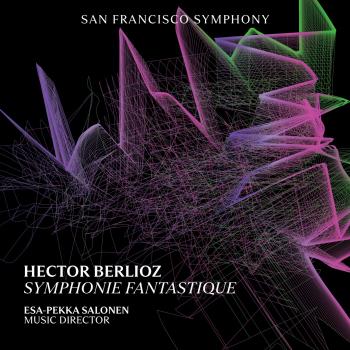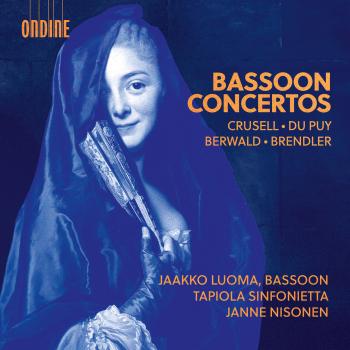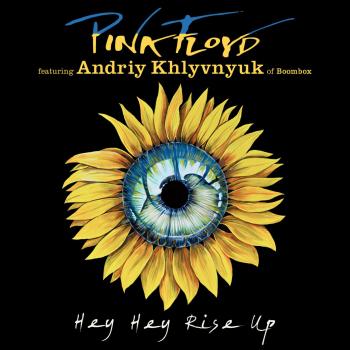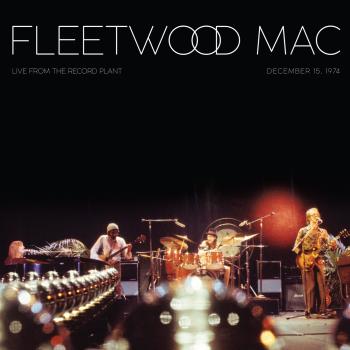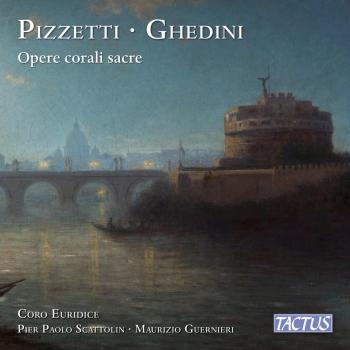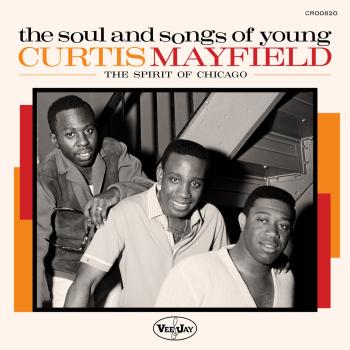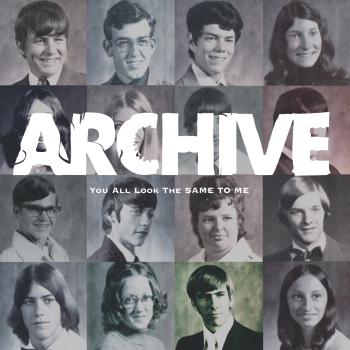
Shostakovich & Bartók Les Dissonances & David Grimal
Album info
Album-Release:
2016
HRA-Release:
21.01.2016
Label: Les Dissonances
Genre: Classical
Subgenre: Orchestral
Artist: Les Dissonances & David Grimal
Composer: Dmitri Shostakovich (1906-1975), Béla Bartok (1881-1945)
Album including Album cover Booklet (PDF)
- 1 I. Largo 05:26
- 2 II. Allegro molto 02:47
- 3 III. Allegretto 04:05
- 4 IV. Largo 05:47
- 5 V. Largo 04:59
- 6 I. Allegro non troppo 09:18
- 7 II. Molto adagio 09:49
- 8 III. Allegro assai 07:33
Info for Shostakovich & Bartók
Chamber Symphony in C minor op.110a Transcribed by Rudolf Barshai:
A key figure of twentieth-century music, Dmitri Shostakovich (1906-1975) embodies the ambiguity of the Soviet regime towards artists. During the first part of his career, he embraced Bolshevism in the conviction that it was a fertile ideological breeding ground for modernity and creative audacity (the opera The Nose, 1928). In 1936, his opera Lady Macbeth of the Mtsensk District was the target of a violent article of denunciation in Pravda, which led to the interruption of the run of performances and the condemnation of Shostakovich, who now became an ‘enemy of the people’. While many intellectuals and artists were victims of the Stalinist purges, he oscillated from then on between concessions made under pressure from the regime and veiled criticisms. With the Cold War, his music and his reputation having reached the other side of the Iron Curtain, Shostakovich found himself now the object of criticism, now heaped with honours, as threatening episodes and thaws in East-West relations succeeded one another.
From 1959 onwards Shostakovich travelled to Dresden in what was then the German Democratic Republic to receive medical treatment for his poliomyelitis. Here he found a city practically wiped o the map by the Allied bombing of 1945 and still bearing the scars of destruction. Deeply affected by the sight, he composed in three days in July 1960 his String Quartet no.8, which he dedicated ‘to the victims of war and fascism’.
The Chamber Symphony op.110a is a transcription of the Quartet no.8 for string ensemble with the addition of a double bass line. The arrangement by the conductor and friend of the composer Rudolf Barshai aimed to be as faithful to the original work as possible while enabling it to be performed for audiences in large concert halls.
Shostakovich wrote to his friend Isaac Glikman on 19 July 1960: ‘As hard as I tried to rough out the lm score I’m supposed to be doing, I still haven’t managed to get anywhere. Instead I composed this ideologically awed quartet that’s no use to anybody. I started thinking that if some day I die, nobody is likely to write a work in memory of me, so I had better write one myself. The title page could carry the dedication: “To the memory of the composer of this quartet”. The main theme is the monogram D, Es, C, H [the notes D, E at, C, B in German notation], that is, my initials. The quartet also uses themes from some of my own compositions and the revolutionary song “Tormented by grievous bondage”. The themes from my own works are as follows: from the First Symphony, the Eighth Symphony, the [Second Piano] Trio, the [First] Cello Concerto, and Lady Macbeth. . . . And I forgot – there’s also a theme from my Tenth Symphony.’
Divertimento for strings Sz.113:
In 1939, at the age of fifty-eight, Béla Bartók (1881-1945) enjoyed an international reputation. He had already composed masterpieces that had had an enormous impact (The Miraculous Mandarin, Bluebeard’s Castle, most of his piano and orchestral music). For more than thirty years, along with Zoltán Kodály, he had pursued an ethnomusicological project aiming to collect, catalogue, copy out and record the music of oral tradition of Romania and Hungary.
Bartók and the conductor and philanthropist Paul Sacher had known each other ten years when the latter commissioned the Divertimento for strings and rented a Swiss chalet to serve as the composer’s residence while he wrote it. After the Quartet no.6 and the Music for Strings, Percussion and Celesta, this was to be Sacher’s last commission to Bartók.
Despite the comfort of his working conditions, the fortnight in August 1939 taken up by composition of the Divertimento plunged Bartók, a longstanding antifascist and antimilitarist, into an atmosphere of dread at the imminence of war. Admiral Horthy had held Hungary beneath his yoke since 1931, and Bartók saw the Nazi menace getting closer every day. On 18 August 1939 he wrote to his son: ‘I don’t like your going to Romania – in such uncertain times it is unwise to go anywhere so unsafe. I am also worried about whether I shall be able to get home from here if this or that happens.’
Like a last farewell to a Europe he could feel vanishing around him, Bartók composed in this Divertimento a final race for life, a hymn to the earth and to the men and women whose actions must surely overcome this ‘regime of thieves and murderers’. His only weapon was his music, totally human, descriptive, intense, dramatic and dancelike.
Two months after the work’s premiere, on 11 June 1940, a deeply distressed Béla Bartók left Europe for good, en route to the United States. He wrote to a female friend: ‘Here we are with our hearts full of sadness, and we must say farewell to you and your family – for how long? Perhaps for ever, who knows? This farewell is cruel, infinitely cruel.’
Les Dissonances
David Grimal, violin
David Grimal
is a musician who enjoys an international reputation for the originality of his musical career. In his tireless quest to reflect on the role of his art in society, he juxtaposes perspectives in order to make music differently by reinventing the sense of the collective.
As an internationally renowned soloist, he has been invited to perform under the direction of the leading conductors (Christoph Eschenbach, Heinrich Schiff, Lawrence Foster, Emmanuel Krivine, Mikhail Pletnev, Rafael Frühbeck de Burgos, Peter Eötvös, Andris Nelsons, Jukka- Pekka Saraste, Christian Arming, Andrés Orozco-Estrada, Stanisław Skrowaczewski, Michel Plasson, Hubert Soudant, François-Xavier Roth, Pascal Rophé, Gerard Korsten, James Judd, Matthias Bamert, Lawrence Foster, Jaap van Sweden etc.) with such formations as the Orchestre de Paris, the Orchestre Philharmonique de Radio France, the Chamber Orchestra of Europe, the Berliner Symphoniker, the Russian National Orchestra, the New Japan Philharmonic, the English Chamber Orchestra, the Mozarteum Orchester Salzburg, the Jerusalem Symphony, the Prague Philharmonia, the Gulbenkian Orchestra Lisbon, Sinfonia Varsovia, the Florida Philharmonic and the Hungarian Radio Symphony Orchestra…
He is a welcome guest in the world’s foremost concert halls, among them Suntory Hall in Tokyo, the Philharmonie de Paris, the Vienna Musikverein, the Amsterdam Concertgebouw, the Berlin Konzerthaus, Wigmore Hall in London, the Zurich Tonhalle, Lincoln Center in New York, the Tchaikovsky Conservatory in Moscow, the Ferenc Liszt Academy in Budapest, the Victoria Hall in Geneva, the Auditorio Nacional in Madrid, the Théâtre des Champs-Élysées in Paris, the National Concert Hall in Taiwan and Bozar in Brussels.
Many composers have dedicated works to him, including Marc-André Dalbavie, Brice Pauset, Thierry Escaich, Lisa Lim, Jean-François Zygel, Alexandre Gasparov, Victor Kissine, Fuminori Tanada, Ivan Fedele, Philippe Hersant, Anders Hillborg, Oscar Bianchi, Guillaume Connesson, Frédéric Verrières, Richard Dubugnon, Eric Montalbetti …
An indefatigable researcher, he re-examines the early music repertory and in particular explores historically informed performance practice with such musicians as Andreas Staier, Brice Pauset, Mathieu Dupouy and Maude Gratton. He is a sought-after pedagogue, and currently teaches at the Hochschule für Musik in Saarbrücken, where he also develops conductorless projects with the student orchestra. He plays the 1710 “Ex-Roederer” Stradivarius with bows by Pierre Tourte, Léonard and François-Xavier Tourte and Pierre Grunberger.
David Grimal is regularly invited to sit on the juries of international competitions and gives masterclasses all over the world.
Les Dissonances
The violinist David Grimal, equally committed to the solo and chamber repertories, appears in the world’s leading classical music venues. As an innovative artist, he aims to reinvent musical practice by leading several projects successfully developing the spirit of “working together”.
For the past ten years he has devoted part of his career to developing Les Dissonances, of which he is artistic director. In this laboratory of ideas, conceived as a collective of musicians, David Grimal and his friends experience music as a joy rediscovered and tackle the symphonic repertory in the spirit of chamber music. The only ensemble that explores the large-scale symphonic repertory without a conductor, Les Dissonances have established residencies in prestigious institutions that offer long-term collaborations, including the Philharmonie de Paris, the Opéra de Dijon and Le Volcan in Le Havre, and appear regularly all over Europe.
Inspired by his experience with Les Dissonances, David Grimal develops projects as artistic director with other orchestras and regular ensembles.
As an artistic director, he develops the concept ‘Let’s play together!’ based on his experience with Les Dissonances. David Grimal rehearses the entire concert programme with the musicians in order to prepare them to play without a conductor at the concert. He shares the platform with them also by performing a concerto. He is invited by many orchestras to work with them and play the great violin concertos, notably Budapesti Vonosok, Anima Chamber Orchestra, Sinfonietta Cracovia, Moscow Chamber Orchestra, Orquesta Sinfónica de Galicia, Orchestra Sinfonica de Murcia, Bilbao Orkestra Sinfonikoa, Orchestre de l’Opéra national de Lorraine, National Orchestra of Metz, Orchestre Philharmonique de Strasbourg, Taipei Symphony Orchestra…
Booklet for Shostakovich & Bartók


